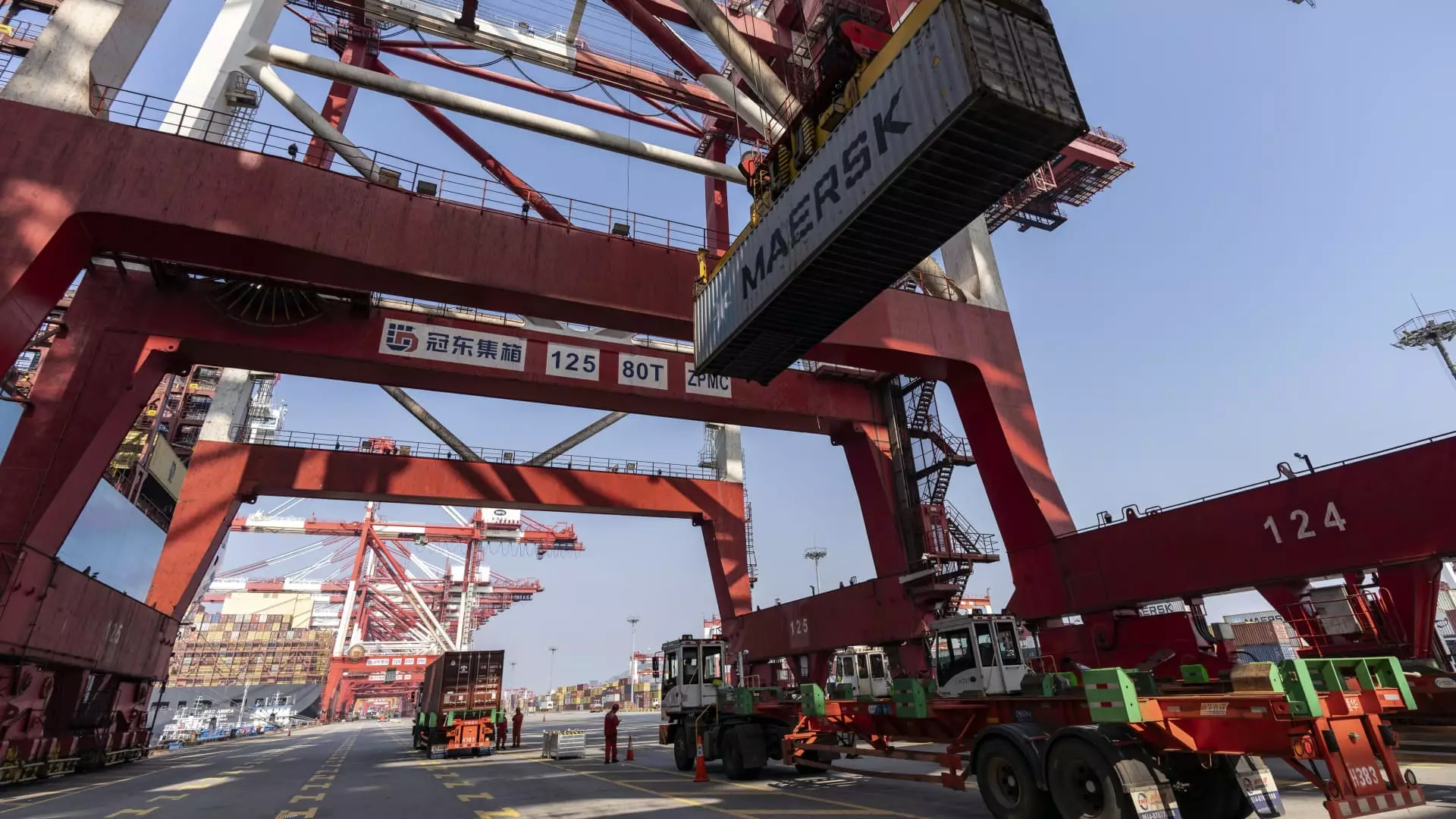September 2023 has proven to be a pivotal month for China’s economy, as evidenced by the latest customs data revealing that both exports and imports fell short of analyst expectations. With exports rising merely 2.4% in U.S. dollar terms, and imports growing by 0.3%, the figures have raised alarms about the sustainability and resilience of China’s economic recovery. Analysts had anticipated a more robust export increase of 6% and a slight import uptick to 0.9% year-on-year. The disappointing statistics have sparked concerns about China’s ability to maintain its position as a global trade leader amid increasing geopolitical tensions and shifts in domestic policy.
Exports have long been a cornerstone driving force behind China’s rapid economic growth, but recent data suggests that the winds are changing. The slower-than-expected growth in both exports and imports reflects a weakening appetite in the global market and domestic economy. Notably, the rise in China’s exports to the U.S. — up 2.2% from last year — appears sheltered within the broader context of simmering trade tensions that are poised to escalate. Tariffs imposed by both the U.S. and the European Union on key Chinese products, including electric vehicles, are likely to present formidable challenges that restrict the capacity for continued robust export growth.
Imports, while showing some positive movement, hint at an underlying weakness in domestic demand. The notable increase in imports from the U.S. — jumping 6.7% — contrasts sharply with the overall picture of falling import volumes in other sectors. Experts believe that increased fiscal spending by the Chinese government may result in temporary spikes in demand for industrial commodities, but such optimism has to be tempered by broader market realities.
Delving deeper into the performance of various sectors, certain areas stand out while others reveal troubling trends. Exports of automobiles saw a year’s growth rate decelerate to 25.7%, reflecting a cooling of what had previously been a thriving segment. In contrast, exports of consumer goods such as shoes, toys, and smartphones experienced declines, posing questions about consumer sentiment both domestically and abroad.
Interestingly, China’s trade with the BRICS nations, particularly Russia, showcased resilience, with exports soaring by 16.6%. However, this was undercut by an 8.4% drop in imports from Russia, illustrating the complexities of international relationships and dependencies in trade. There is additional concern surrounding rare earth exports, vital for numerous technologies, which plunged by over 40%. This contraction indicates not only a shift in global demand but also highlights potential vulnerabilities in China’s supply chains.
Another critical layer to this economic analysis is the state of China’s domestic consumption. A decline in crude oil imports by a significant 10.7% raises flags regarding consumer and industrial demand. Meanwhile, sharp increases in the imports of natural gas and coal show a shift in energy strategies that may be linked to increasing political demands for energy security.
Most assuring for authorities is the surge in soybean imports — nearly 39% — indicating a strong enhancement of food security measures and efforts to stabilize agricultural supplies. However, the core consumer price index’s meager growth of just 0.1% indicates consumers are feeling the pinch, particularly in the wake of a declining tourism market, as evidenced by a 2.1% drop in tourism-related prices.
The current economic climate in China presents an image of fragility, further exacerbated by looming uncertainties around fiscal policies and stimulus measures. Authorities’ announcements about potential increases in the fiscal deficit could serve as an essential prop for the economy, though details remain scant, leaving many investors cautiously optimistic.
As the National Bureau of Statistics prepares to release third-quarter GDP figures alongside other critical economic indicators, stakeholders will be focused on signs of positive movement or alarming stagnation. The uncertainty characterizing the Chinese markets suggests a precarious interplay between government intervention and market forces, with investors taking a wait-and-see approach.
September’s trade data reflects broader economic tensions both domestically and internationally. The interplay of geopolitical factors, trade policies, and shifting consumer behaviors paints a nuanced picture of China’s economic landscape. As the government grapples with the complex challenge of maintaining growth amidst headwinds, the international community watches closely, recognizing that the trajectory of China’s economy will have significant implications for global markets in the years to come.

